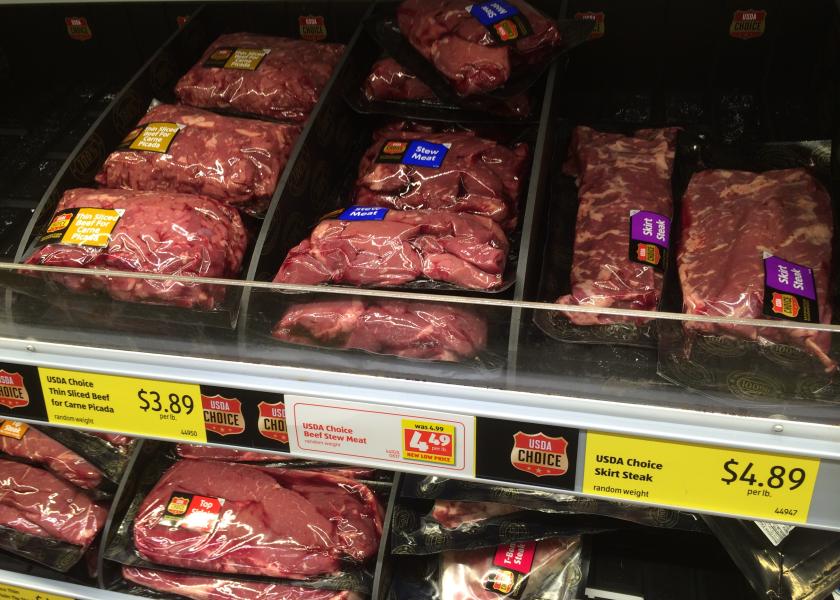Derrell Peel: Beef Product Seasonality

Most agricultural markets exhibit regular patterns of prices through the year, known as seasonal patterns. Price seasonality reflects the net effect of seasonal tendencies in both supply and demand. In the cattle and beef industry, widely varying seasonal price patterns exist for all classes of cattle as well as for each of the many beef products produced in the industry. Some seasonal patterns have shifted in recent years with evolving exports markets, etc. The following discussion is based on average seasonal price indexes for Choice beef primals and wholesale products over the past three years (2016-2018).
The boxed beef cutout value represents the net aggregation of the primary muscle cuts of the beef carcass. Boxed beef cutout values typically vary by about 13 percent, from a seasonal high in May about seven percent above average to a seasonal low in October about six percent below average. The boxed beef cutout includes values for four major primals; rib, loin, chuck and round, as well as brisket, short plate and flank. Each of the four major primals has distinct seasonal price patterns that are the net effect of various beef products that are derived from the primal.
The rib primal is the highest value primal on average and consists primarily of the ribeye in various fabrication specifications (boneless versus bone-in, etc). For example, the boneless ribeye (IMPS* 112A) has a seasonal pattern that includes a lower peak in May at 11 percent above average and the highest peak in November, 13 percent above average, with a seasonal low in January of ten percent below average. Ribeye prices thus tend to vary about 23 percent from high to low during the year. The rib primal in total varies by 14 percent from a June peak nearly eight percent above average to a January low about six percent below average.
The loin primal is more complicated with several products originating in the loin primal, each of which has different seasonal price patterns. The loin primal overall has a seasonal price range of 26 percent varying from a seasonal high in May and June 14 percent above average to an October low about 13 percent below average. The tenderloin (189A) is the highest value beef wholesale product with a seasonal pattern that varies by 18 percent from a seasonal peak 12 percent above average in November to a seasonal low about seven percent below average in September. This pattern contrasts sharply with the strip loin (175) which has a very wide seasonal price range averaging 57 percent from a May/June peak about 36 percent above average to a November low about 21 percent below average. Sirloin products such as the bottom sirloin flap (185A) and tri-tip (185D) have seasonal patterns generally similar to strip loins.
End primals (chuck and round) generally have very different seasonal patterns to middle meats with less seasonal variation compared to rib and loin primals. The round primal varies by nine percent from a peak in January six percent above average to lows two to three percent below average from July through December. The round includes numerous products, such as inside round (169) that peaks in March about seven percent above average with a seasonal low in September about seven percent below average. Outside round (171B), however, has a seasonal peak in January 14 percent about average with a minor peak again in October and a seasonal low in April eight percent below average.
The chuck includes a broad set of products that vary widely in value and seasonal patterns. For example, the top blade (114D), source of Flat Iron steaks, ranges from a seasonal high seven percent above average in May to a February low six percent below average. The clod (petite) tender (114F) ranges from 38 percent above average in April to 20 percent below average in September/October. The chuck roll (116B) ranges from ten percent above average in October to a low seven percent below average in July. The overall chuck primal varies only seven percent from a January peak four percent above average to two percent below average from July to December.
The beef values that cattle producers ultimately see as determinants of cattle prices are the result of a diverse set of beef products with widely ranging values and seasonal patterns. Many beef product values vary sharply at various times of the year as a result of seasonal demand and supply influences.







